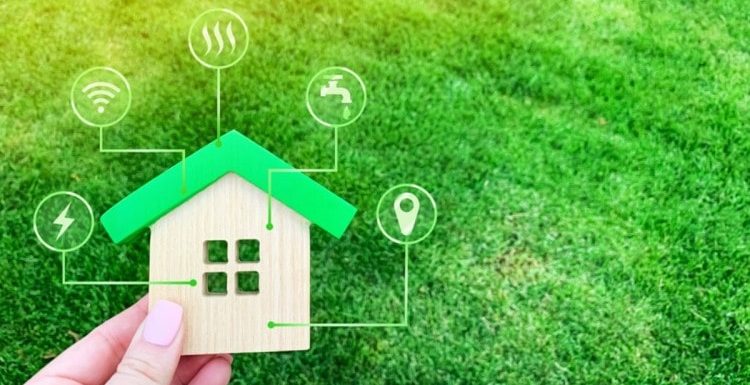
In a world increasingly concerned with environmental issues, green architecture has emerged as a beacon of hope. But what exactly is green architecture? How can we leverage its principles to construct eco-conscious homes that minimize our ecological footprint? In this article, we will explore the essence of green architecture and offer practical insights on creating a sustainable haven for yourself and the planet. Additionally, we’ll discuss the role of CRM software development in streamlining eco-friendly construction projects.
Understanding Green Architecture
Green architecture, also known as sustainable architecture or eco-friendly architecture, is a design philosophy that prioritizes environmentally responsible and resource-efficient building practices. The goal of green architecture is to reduce the negative impacts of construction on the environment while providing healthier living spaces for occupants. This approach focuses on the efficient use of energy, water, and materials throughout the building’s life cycle, from planning and construction to operation and eventual deconstruction.
The Benefits of Green Architecture
- Energy Efficiency: One of the key aspects of green architecture is the emphasis on energy efficiency. By utilizing advanced insulation materials, energy-efficient windows, and solar panels, a green home can significantly decrease energy consumption and reduce greenhouse gas emissions.
- Water Conservation: Green architecture promotes the implementation of water-saving technologies such as rainwater harvesting systems and low-flow fixtures. These measures can substantially decrease water wastage and contribute to the preservation of this valuable resource.
- Improved Indoor Air Quality: Green buildings often feature better ventilation systems and the use of non-toxic materials, leading to improved indoor air quality. This results in healthier living conditions for occupants, reducing the risk of respiratory issues and allergies.
- Sustainable Materials: Opting for sustainable building materials like recycled steel, bamboo, or reclaimed wood minimizes the ecological impact associated with construction while promoting the use of renewable resources.
- Waste Reduction: Green architecture seeks to minimize waste generation during the construction process. By focusing on reusing and recycling materials, it reduces the amount of waste that ends up in landfills.
Designing an Eco-Conscious Home
- Passive Design: Incorporating passive design principles is an essential foundation for green architecture. This involves aligning the home’s layout with the local climate and topography to maximize natural light and airflow, thereby reducing the need for artificial lighting and excessive air conditioning.
- Energy-Efficient Appliances: Selecting energy-efficient appliances, such as Energy Star-rated products, ensures reduced energy consumption without compromising functionality.
- Green Roofs and Walls: Green architecture encourages the use of green roofs and walls, where vegetation is integrated into the building structure. These elements help regulate indoor temperature, improve air quality, and provide additional green spaces in urban environments.
- Renewable Energy Sources: Integrating renewable energy sources, like solar panels or wind turbines, can transform a home into a self-sustaining powerhouse that generates clean energy.
- Rainwater Harvesting: Implementing rainwater harvesting systems allows homeowners to collect and store rainwater for non-potable uses such as gardening and flushing toilets.
CRM Software Development for Green Construction Projects
In recent years, Customer Relationship Management (CRM) software has revolutionized various industries, and the construction sector is no exception. CRM software development has made significant strides in streamlining eco-friendly construction projects, bringing numerous benefits:
- Project Management: CRM software tailored for green construction aids project managers in organizing tasks, tracking timelines, and managing resources efficiently. This optimization ensures that projects adhere to sustainable principles and avoid unnecessary delays.
- Supply Chain Efficiency: Sustainable construction relies on the availability of eco-friendly materials and technologies. CRM software can facilitate communication and collaboration with suppliers of green materials, ensuring a smoother procurement process.
- *Stakeholder Engagement*: Effective stakeholder engagement is vital for successful green construction projects. CRM software allows for seamless communication with all stakeholders, including architects, contractors, and environmental consultants.
- Data Analytics: CRM software provides valuable insights through data analytics, helping construction firms assess the environmental impact of their projects and identify areas for further improvement.
- Enhanced Customer Relations: CRM software enables construction companies to maintain strong relationships with eco-conscious clients. It allows for personalized communication and timely updates on project progress, fostering trust and client satisfaction.
In Conclusion
Green architecture presents an opportunity to revolutionize the construction industry and pave the way for a more sustainable future. By embracing eco-conscious principles, such as energy efficiency, water conservation, and sustainable materials, we can construct homes that are not only environmentally friendly but also provide healthier living environments for occupants.
Moreover, the integration of CRM software development in green construction projects brings a new level of efficiency and organization. It optimizes project management, streamlines supply chain processes, and enhances stakeholder engagement. This powerful combination of sustainable architecture and advanced technology can shape a better tomorrow for both the planet and its inhabitants. Let us embrace green architecture and CRM solutions to build a harmonious and eco-conscious world.
